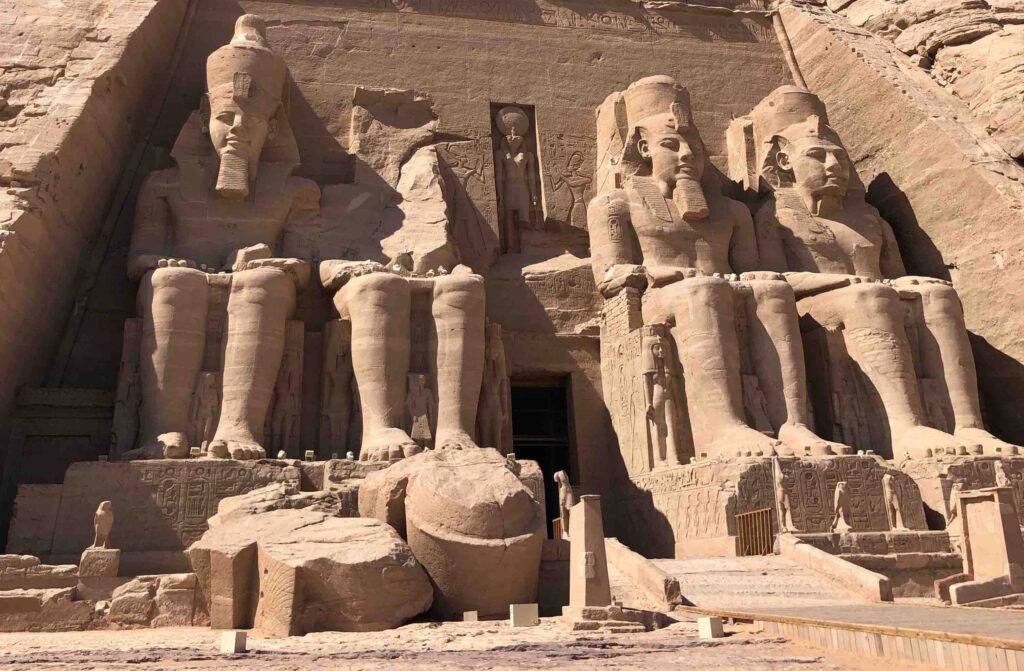
In the far south of Egypt near the remote and desolate border with Sudan stands one of the most recognizable monuments in the world – the temples of Abu Simbel. This small but magnificent temple complex, which is dedicated to the gods Ra, Ptah, and Amun, is a testament to the power and wealth of ancient Egypt, and specifically to the majesty of Ramses the Great. It is also a symbol of the timeless appeal of this fascinating ancient culture and a reminder of the incredible achievements of its people.
The history of Abu Simbel dates back over 3,200 years to the reign of Ramses II who reigned as pharaoh of Egypt from 1279 to 1213 BC. It was during this time that he commissioned the construction of two massive temples near Abu Simbel as a symbol of his power and a tribute to the gods. The temples were carved directly out of the cliffs on the banks of the Nile, and the massive size and intricate details of the sculptures are truly breathtaking.
But unlike the monuments to himself that Ramses II had built throughout the rest of Egypt, those at Abu Simbel also served a more ominous purpose. There was never any significant permanent settlement in the area around Abu Simbel to admire and worship at these temples. Instead, the temples of Abu Simbel stood as a warning to any potential invaders from the south who passed through this remote border region that the might and strength of the land that lies ahead was so great that trying to invade and conquer it would be suicide.
In the millennia that followed, the temples at Abu Simbel were gradually buried by sand and forgotten in this far-flung uninhabited region until they were rediscovered in 1813 by Swiss explorer Jean-Louis Burckhardt. Over the following two centuries, Abu Simbel became one of the most famous tourist destinations in Egypt after the Pyramids of Giza and the tombs and temples of Luxor, attracting hoards of visitors daily from all over the world.
However, in the 1960s, the construction of the Aswan High Dam threatened to flood the site, and the temples were in danger of being lost forever. In a massive international effort, the temples of Abu Simbel were cut into enormous blocks, relocated to higher ground, and reassembled block by block. As a result of this unprecedented preservation effort, visitors today can admire these incredible monuments in their new nearby location.
Visiting the temples of Abu Simbel is truly an unforgettable experience. The are not only awe-inspiring, but they offer a unique glimpse into the rich history and culture of this once-mighty empire along the Nile.



